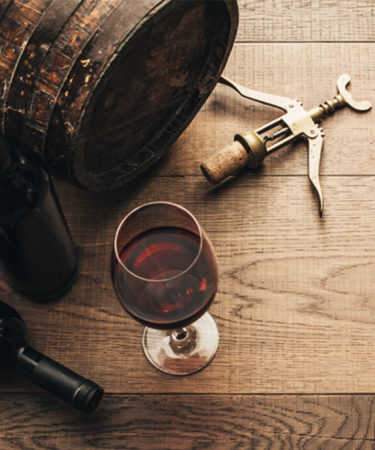Oxidative and reductive are terms used to describe two contrasting styles of vinification. The processes are ideologically and scientifically opposed, and each has a profound impact on the aromas, flavors, and texture of wine.
Both terms refer to the relative presence or absence of oxygen during winemaking. Oxidative winemaking aims for a higher, but controlled, presence of oxygen, while reductive winemaking aims to complete vinification with as little influence of oxygen as possible.
How Each Process Works
The aim of oxidative winemaking is to develop secondary aromas and flavors in wine and add textural complexity. Winemakers do so by introducing a controlled amount of oxygen at various stages of vinification via techniques like barrel fermenting, batonnage (stirring lees), and racking (moving wine from one barrel to another).
In reductive winemaking, oxygen is the enemy, and winemakers aim to protect the grapes and pre-fermented juice from air. If successful, they preserve the fresh fruit character of their wines, resulting in a lighter, fresher, fruitier style that’s typically paler in color. The main weapons in a winemaker’s armory to tackle oxygen are inert gases and sulfur dioxide, as well as controlled-temperature fermentation.
The Risks Of Each Process
In oxidative winemaking, the main risk is the wine becoming oxidized, which admittedly sounds counterintuitive. Oxidized wine, however, is different from wine that has experienced oxygenation.
Oxygenation helps wines develop their aged (tertiary) flavors and aromas. Oxidized wines, on the other hand, have been exposed to too much uncontrolled oxygen. They’re easy to spot: their color dulls, and the flavor turns flat and loses all fruit character (sort of like a really tired, old sherry). Once a wine has oxidized, there’s no way of saving it.
Heavy-handed reductive winemaking also presents challenges. Adding too many sulfites, either in the vineyard or during fermentation, increases the likelihood of the formation of volatile sulfur compounds such as hydrogen sulfide or mercaptans. These can add unappealing scents, such as rubber, cabbage, and rotten eggs. In some cases, vigorous swirling or decanting can help cure a wine of these “reductive” notes.
Examples of Each Style
The differences between oxidative and reductive winemaking are best displayed by comparing two styles of white wine: barrel-fermented Chardonnay and New Zealand Sauvignon Blanc.
To make the Chardonnay, winemakers vinify in oak barrels, which permits a small amount of oxygen into the liquid. They also allow malolactic fermentation (MLF) to take place and stir the lees into the wine. The end result is creamy, buttery, doughy secondary notes, with a rich mouthfeel. This is a classic example of oxidative winemaking.
To achieve their refreshing style of Sauvignon Blanc, New Zealand winemakers vinify in stainless steel — reducing the influence of oxygen — and keep temperatures low to prevent MLF. These factors maintain the wine’s fruitiness and provide a textbook example of reductive winemaking.
Are All Wines Oxidative or Reductive?
No. Most wines are made using a combination of both techniques to maximize the stability of the wine. Oxygen breaks up any volatile sulfur compounds that form during fermentation, and adding sulfites protects the liquid from refermenting in bottle. In the case of red wines, oxygen also helps the development of color and tannic structure.
